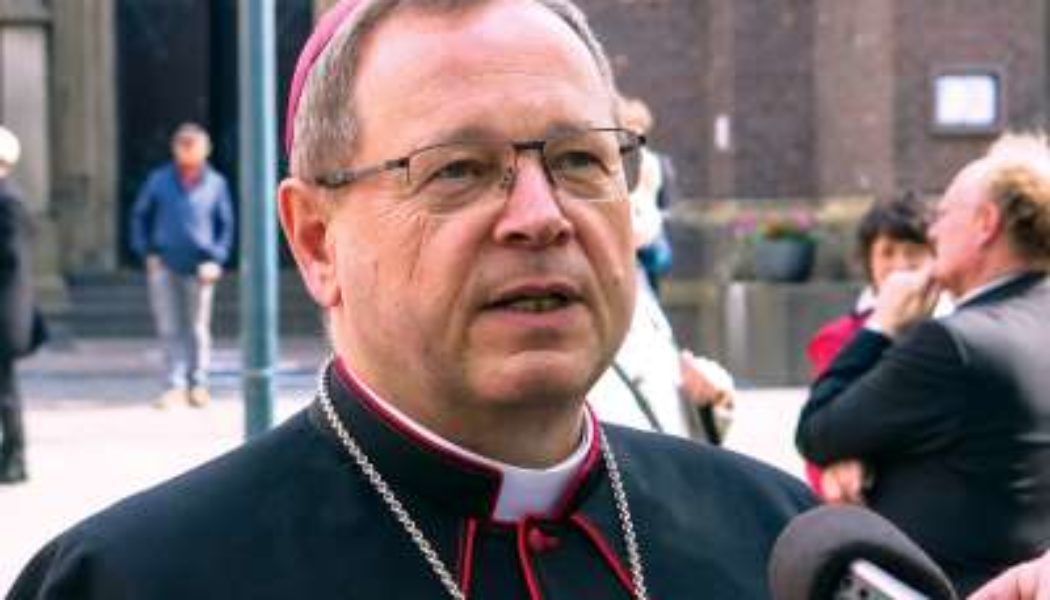
“It’s a fact that church attendance has strongly (been) reduced, with a significant and steady decline in priestly vocations and church membership, and an increasing loss of financial income,” said Matthias Kopp, spokesman for the German bishops’ conference.
“However, the closures have not only affected parish churches — the abandonment of monasteries, as well as of church and charitable institutions, has also led to empty religious houses, pilgrimage centers and chapels,” he told OSV News.
The lay Catholic was reacting to the early May report in Germany’s Kirche & Recht review, which warned that 40,000 rectories, community centers and places of worship would have to be abandoned by 2060.
In an OSV News interview, he said it was unclear whether the report’s data had been confirmed by the Catholic and evangelical churches, but added that necessary adjustments to “territorial pastoral structures” had long been underway across Germany.
“Some places of worship are either no longer needed at all, or not fully needed, while many congregations are already forced to keep their churches closed outside of Mass times,” Kopp told OSV News.
“The church has to accommodate the situation of its members, as well as of its buildings, finances and services such as Caritas. This means changes are necessary, and these are the responsibility of parishes and dioceses.”
The report, by legal experts Adalbert Schmidt and Karl Schmiemann, said 80% of Germany’s 42,500 Catholic and evangelical churches were officially listed as architectural monuments.
However, it added that at least 1,200 had been boarded up in the last two decades and warned that many others would face demolition unless rapidly converted into cultural and residential centers.
The report urged monument protection officials to devise procedures for negotiating alternative uses for the sites with Germany’s 20 regional evangelical churches and 27 Catholic dioceses, of which the Aachen, Essen, Hildesheim, Limburg and Minster dioceses have carried out most church closures.
“Cooperation between church and state heritage authorities varies greatly and is sometimes problematic,” the report added.
“Politicians and large sections of society also claim a public interest and right of participation because churches naturally affect the local atmosphere. … Future-proof protection can only succeed if the state and church are given equal and joint responsibility,” the authors of the report said, pointing out that both the state and church should show an interest in what happens to Germany’s churches, of which hundreds are historical sites.
Germany’s Catholic Church has merged and reorganized parishes and sold off ecclesiastical assets over the last two decades, in the wake of falling membership and revenues, in a trend also reflected in other European countries.
Convents and religious houses also have closed or rented premises for retirement homes, hospices and hotels, with 12,000 active Catholic women religious, most of whom are over 65, compared to 30,000 active sisters two decades ago.
Meanwhile, concern also has been expressed over the future of church-owned schools, whose rights are guaranteed under Germany’s 1949 constitution, or Basic Law, but have had to raise fees and undergo selective closures.
“Without church schools, secular society will lose a partner which has contributed importantly to its cultural, religious and ideological diversity,” the former president of Germany’s Bundestag parliament, Wolfgang Thierse, said in a joint May 11 article in the Frankfurter Allgemeine Zeitung daily with Father Klaus Mertes, ex-rector of Berlin’s Jesuit-run Canisius-Kolleg high school.
“Yet the motivation to support the state as a strong civil society partner through commitment to education is dwindling. Church life is increasingly withdrawing from the community,” Thierse said.
In April, the Catholic Church’s Dresden-Meissen Diocese said it would cut education funding by 69% in a new austerity program, to cope with a predicted annual budget deficit of at least $ 19 million, with additional savings of 26% to 40% forecast in staffing, administration, and pastoral and social work.
The Catholic dioceses of Würzburg and Eichstätt also have announced drastic real estate reductions in the face of budget deficits, including the sell-off of at least eight schools, while the Rottenburg-Stuttgart Diocese confirmed May 8 that a “consolidation process” would be needed to cope with an expected 40% drop in revenue by 2040.
In his OSV News interview, Kopp said the German bishops’ conference had no coordinated national policy for handling property issues, which were a matter for local dioceses, and did not expect greater state support in maintaining schools, charities and historic places of worship to make up for falling church revenues.
However, the Eichstätt Diocese’s media and public relations officer, Pia Dyckmans, said current problems had been exacerbated by the departure of Catholics from the church, signaled by discontinuing payment of its annual Kirchensteuer, or membership tax.
“It feels like we’re standing with our backs against the wall — even supposedly rich dioceses like Rottenburg-Stuttgart report they will soon no longer be able to cover their budgets,” Dyckmans told the Katholisch.de news agency May 11.
“Scandals, outdated structures and a language foreign to many have made church unattractive for a large majority. … Changes in the ecclesiastical landscape have been known for a long time and are slowly affecting our structures and institutions,” she said.
Catholics make up around 26% of Germany’s 84 million inhabitants, although church attendance has dropped sharply since 2019, with only 4.3%of Catholics currently coming to Mass, according to a May 4 Katholisch.de report.
In June 2022, the bishops’ conference president, Bishop Georg Bätzing of Limburg, said he had been “deeply shaken” by new data showing 359,338 Catholics quit the church in 2021, 60% more than during the previous year, with exit rates largest in the Berlin, Cologne, Hamburg and Munich-Freising archdioceses.
Although the church’s Kirchenstauer income tax has returned to pre-pandemic levels, reaching $7.32 billion in 2022, experts have warned that rising inflation, personnel, energy and refurbishment costs will increasingly consume church budgets, as more tax-paying Catholics reach retirement age.
In March, Germany’s Evangelical Church, which makes up 22% of the population, said its overall membership had fallen during 2022 by 2.9%, with revenue from the Kirchensteuer also forecast to halve in coming years.








